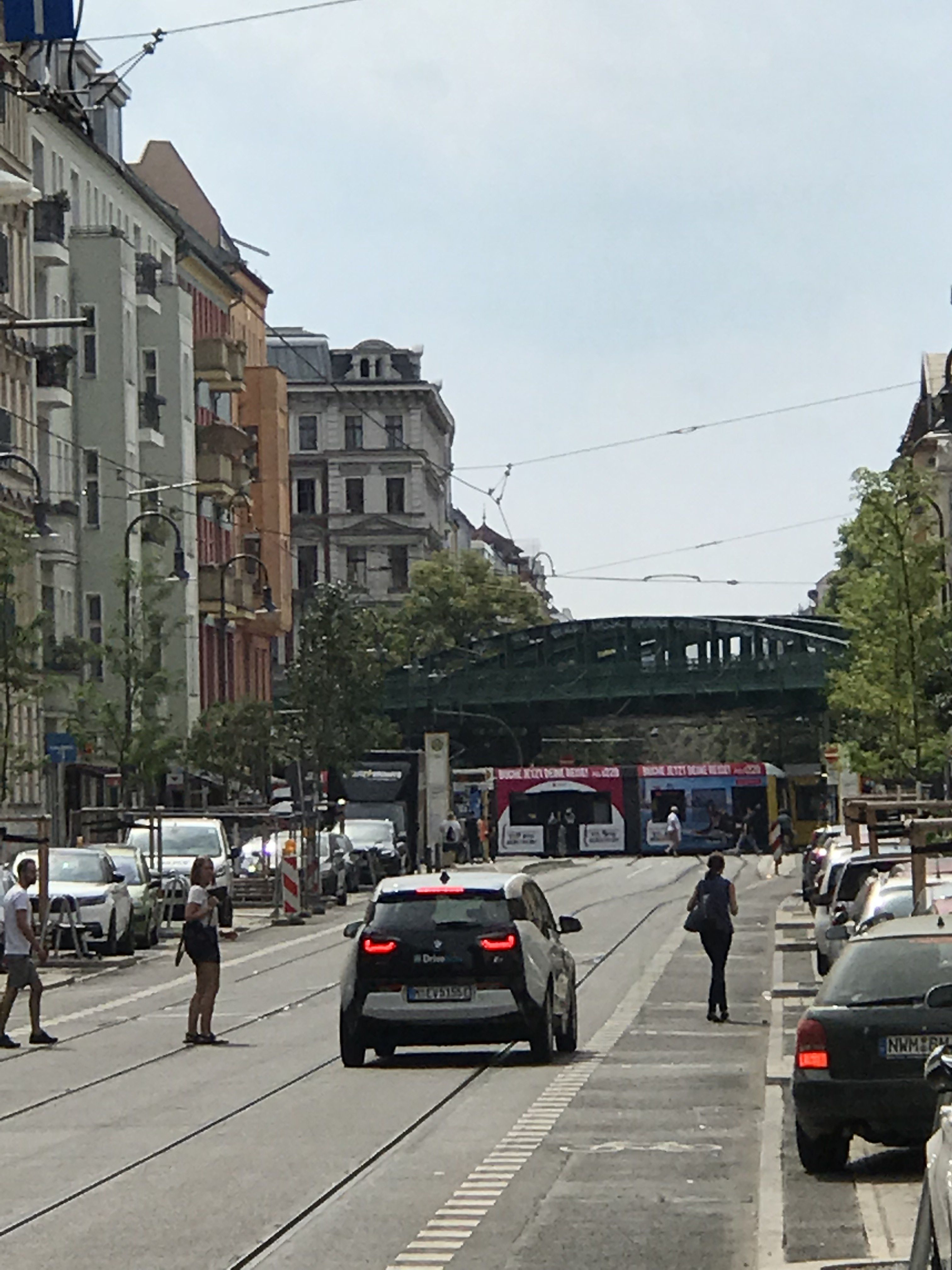Germany, Berlin
FC-01x Future Cities (Self-Paced) - Exercise 1 : "Making the Invisible - Visible"

Uploaded on 2018-08-04 by Lars Rybak
1) We see: blue sky, multi-family residential buildings, retail units. Green trees, tramway´s power cables and a tramway. Parking spaces, mostly occupied, pedestrains. Bicycle lane and e-car from BMW’s car sharing. 2) a) Each of the parked cars has a registered owner. Do they live in the buildings around? Or did they arrive by car despite public transportation? Could we analyse the extent of “foreign” cars parked and the number of moves on a spot per day, we might find a reasonable measure to calculate parking fees. b) Residents appreciate easy access to public transportation. They also benefit from close proximity to major roads. However, once this goes beyond a certain level, it becomes disadvantageous, as emissions increase. (How) does this correlate with rents? Is there a level of infrastructure density from which on people don’t benefit anymore, with corresponding effects on willingness to pay? 3) In that respect, one could rate neighbourhoods. If rents and purchase prices are available, it could be identified whether there is a correlation. If so, this could result in benchmarks for urban planning that contribute to a healthier environment and increase the efficiency the property markets.